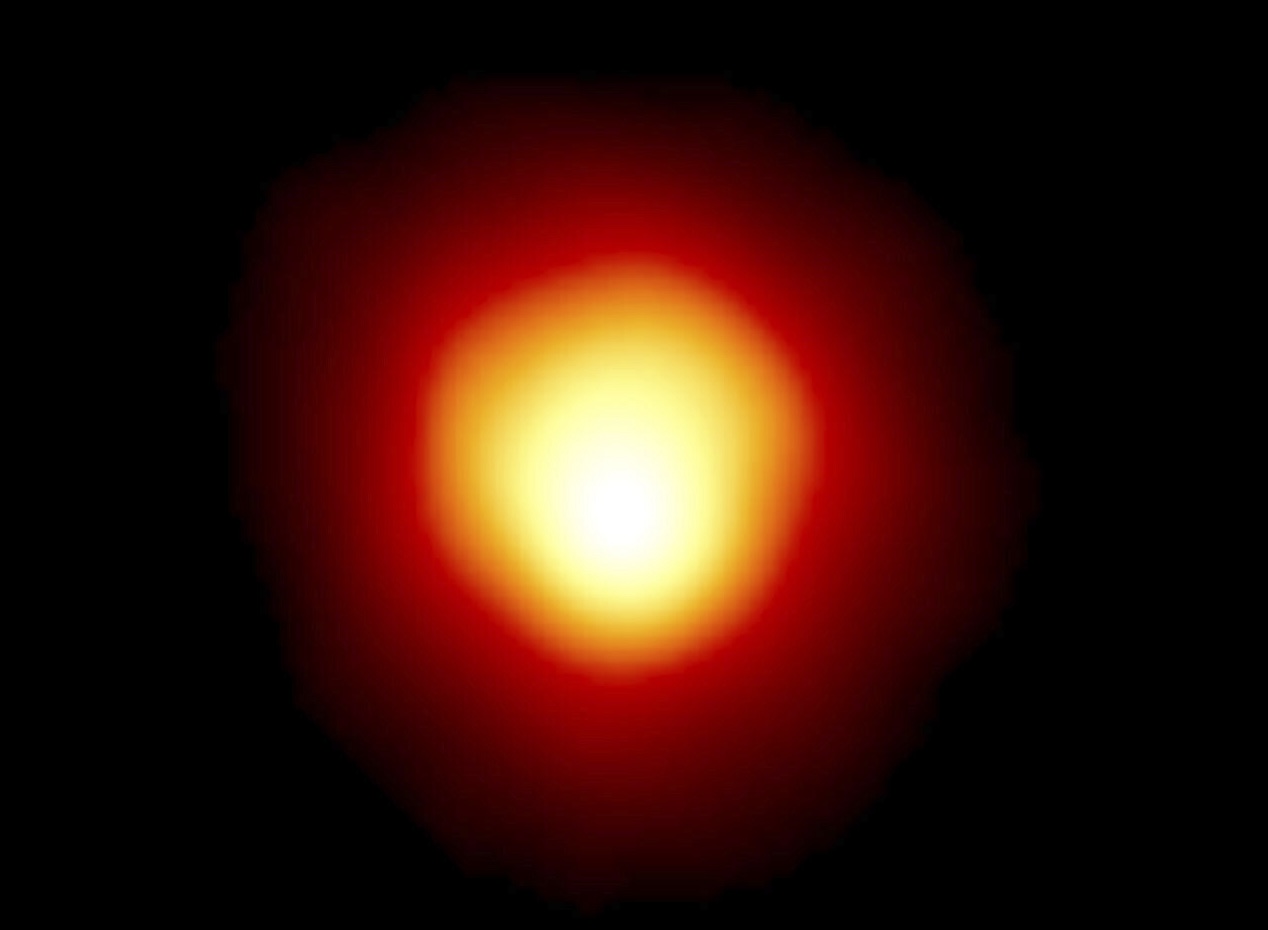One of the brightest objects in the night sky is expected to be obscured in a once-of-a-kind type of celestial object, and it doesn’t involve the sun or Earth’s moon.
The asteroid Leona is on track to pass through, by a vast distance, Earth’s view of the star Betelgeuse in the constellation of Orion between Dec. 11 and 12, depending on where one can see it from Earth’s surface.
- Read more: Where can you see the 2024 total solar eclipse in New England?
When Leona passes Betelgeuse, the star will appear dimmer and “maybe even disappear – for several seconds,” EarthSky described. The estimated time in which this eclipse occurs will be around 10 seconds.
The reason an asteroid so far away can do this is due to Leona’s oblong shape at 34 miles wide and 50 miles long, according to the AP. While Betelgeuse is 700 light-years away, Leona drifts through the solar system’s asteroid belt, located between Mars and Jupiter as a border between the inner solar system and the four gas giants, including Saturn, Uranus and Neptune, lest anyone forgets the non-gas giant dwarf planet, Pluto.
Betelgeuse is a red supergiant that makes up the right shoulder of the constellation Orion, NASA said. Its red-orange color comes from where the star is at in its lifetime, nearing its end as it puffs up and expands. Stars reach this point when they run out of hydrogen to fuel their nuclear fusion before the star dies and goes supernova, according to the European Space Agency.
- Read more: Here’s when the Geminid meteor shower is expected to reach its peak
In contrast to the sun, Betelgeuse is much larger, brighter and yet younger and cooler by 40,000 degrees, and visible to the naked eye, NASA said. From Earth’s vantage point, it’s the closest red supergiant star to Earth at 1,000 light-years away, EarthSky noted.
The death of Betelgeuse is expected to occur in 100,000 years, when it will go supernova and either become a neutron star, which is a stellar remnant containing more mass than the sun in a ball the size of Manhatten Island, or a black hole, according to NASA.
Between 2019 and 2020, an event astronomers called the Great Dimming happened around Betelgeuse, NASA said. A blob of plasma dispersed from the star and cooled, forming a cloud that dimmed Betelgeuse from view on Earth. By April 2020, the star returned to its normal brightness. Initially, scientists thought Betelgeuse was entering a “pre-supernova” stage, “the closest supernova to ever be observed and recorded by humans,” NASA said.
- Read more: Asteroid Bennu could crash into Earth in September 2182, NASA warns
Now for how to see this celestial event. EarthSky shared a map of what parts of Earth will be able to see Leona’s occultation, or hiding from view, of Betelgeuse. Stargazers from Armenia, southern Europe, including Calabria in southern Italy, Sardinia, Greece and Turkey, across the Atlantic Ocean southward to the Bahamas, Miami, the Florida Keys and part of Mexico should have a view of Betelgeuse’s brief disappearance in the night sky.
From Florida, the eclipse should be visible at around 8:24 p.m. on Monday, Dec. 11, EarthSky added. Given its trajectory, it won’t be likely that the rest of the East Coast, let alone Massachusetts, will be able to see this event.
One alternative is to watch a live stream from one of the countries with a view of Leona’s occultation. The Italian-based Virtual Telescope Project already has a stream ready on its YouTube channel scheduled to start at 8 p.m. Eastern Standard Time on Monday ahead of the eclipse. They also shared a simulation of how the eclipse will appear from Earth in a separate video available at the link here.

Dr. Sarah Adams is a scientist and science communicator who makes complex topics accessible to all. Her articles explore breakthroughs in various scientific disciplines, from space exploration to cutting-edge research.






/cdn.vox-cdn.com/uploads/chorus_asset/file/25453399/adobe_delta_closer.jpg)

